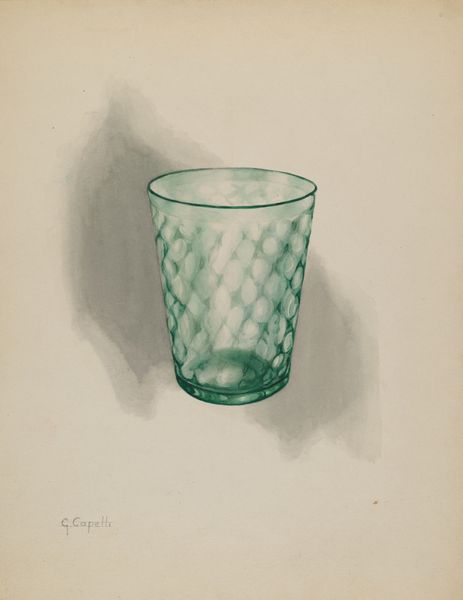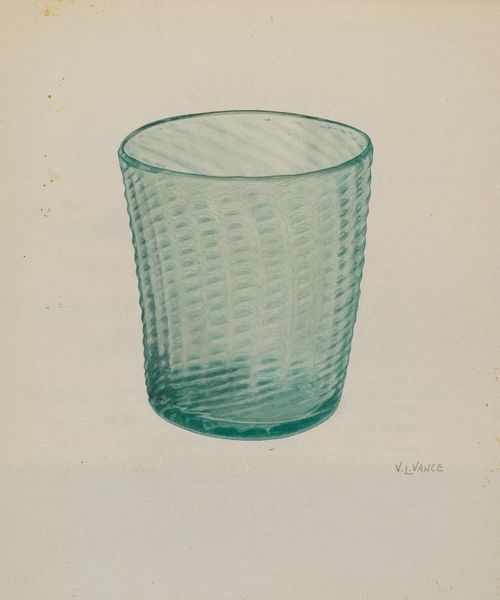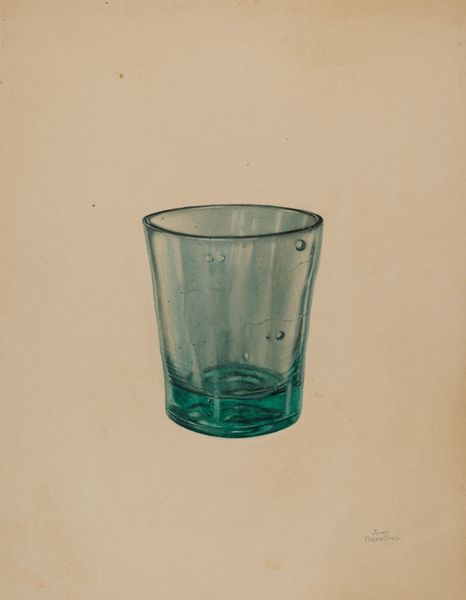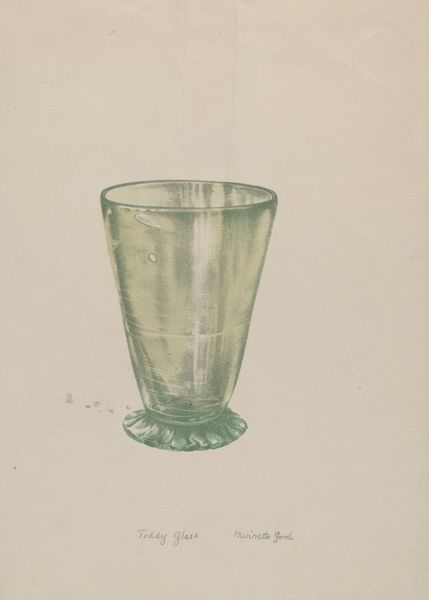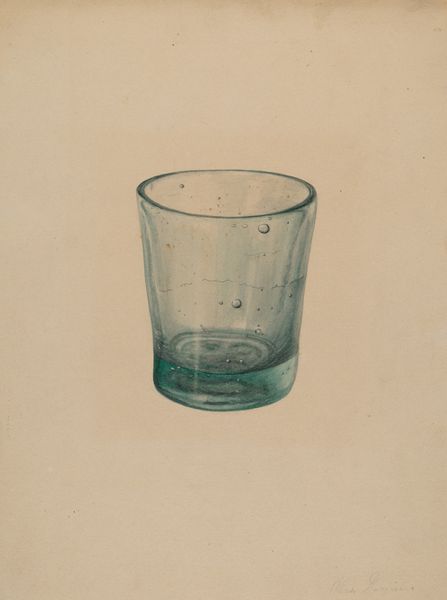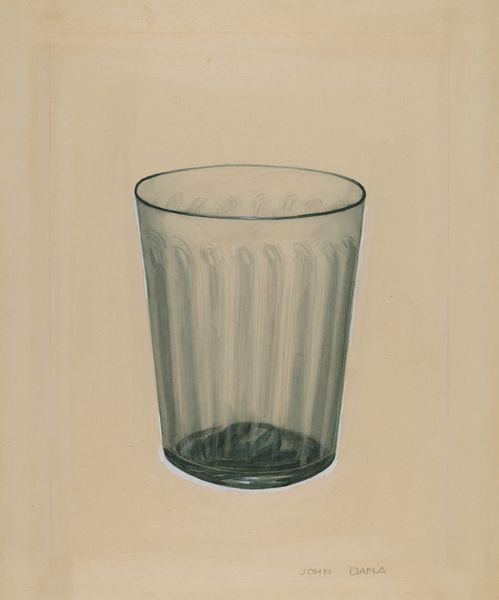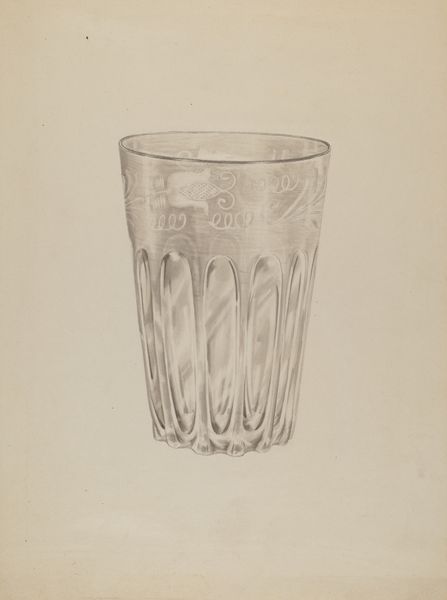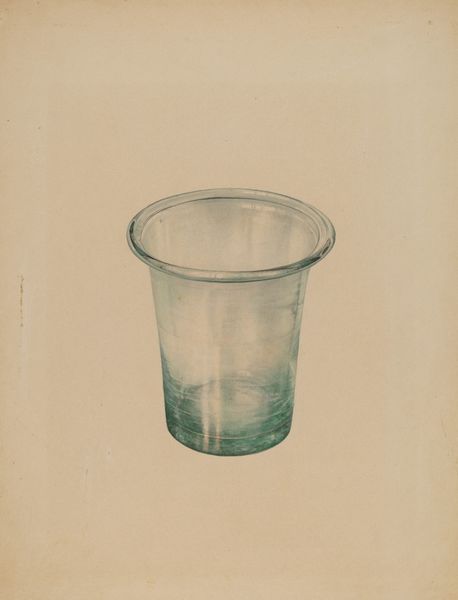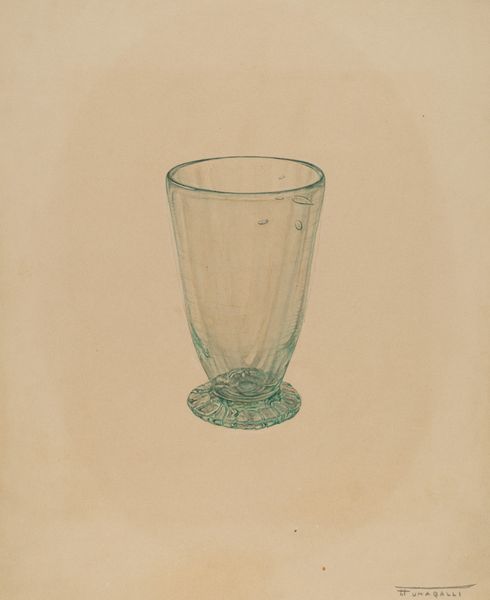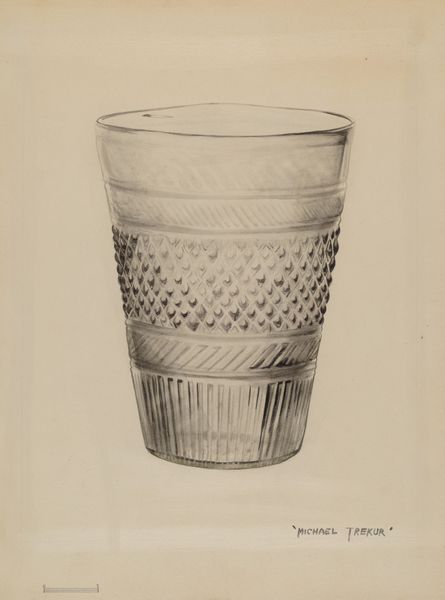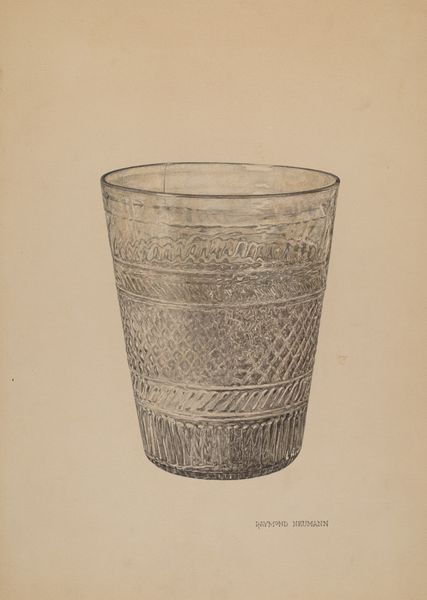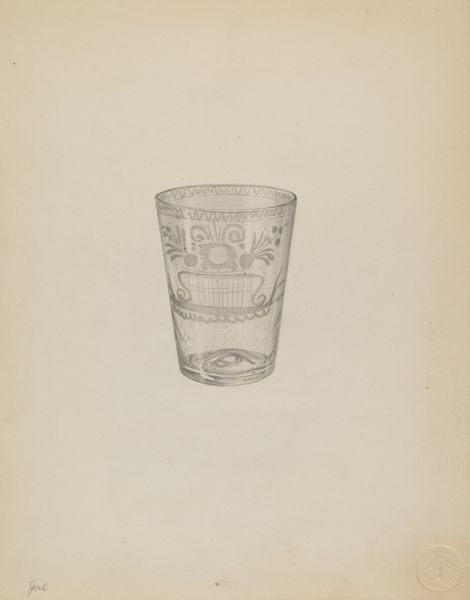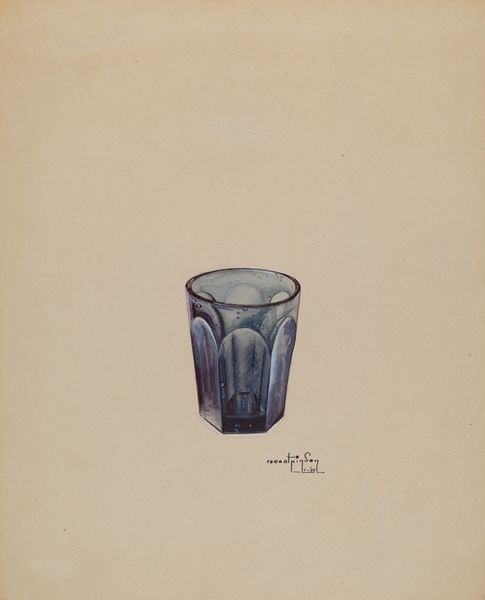
drawing, watercolor
#
drawing
#
watercolor
#
watercolour illustration
#
watercolor
#
realism
Dimensions: overall: 29.1 x 22.8 cm (11 7/16 x 9 in.)
Copyright: National Gallery of Art: CC0 1.0
Editor: So, here we have Giacinto Capelli's "Tumbler," a watercolor drawing from around 1937. It's quite simple, just a glass rendered in shades of green. I find its simplicity oddly calming. How do you interpret this work, given its context? Curator: Considering its creation during the late 1930s, this seemingly straightforward depiction invites a deeper probing into the prevailing socio-political landscape. The era was overshadowed by the looming threat of war, mass displacement, and widespread economic uncertainty. Could the tumbler, in its utter simplicity, be read as a counterpoint to the prevailing turmoil? Editor: A counterpoint, how so? Curator: Perhaps its unpretentious form served as a quiet act of resistance against the escalating complexities of the world. Water, after all, has deep symbolic associations across different cultures. It could be a symbolic message that is talking about sustainability, water rights, climate refugees...? Editor: I hadn't considered that! It's easy to see it as just a glass. So, by focusing on something ordinary, Capelli might have been making a statement about the value of everyday life. But is the drawing explicitly political? Curator: It's essential to appreciate that artworks rarely exist in a vacuum. The personal is often profoundly political. The intimate scale and humble subject can reflect a need to focus on small pleasures and to appreciate that art must focus on life under the terrible threat of violence. Perhaps its a simple tool used by everyone in the community regardless of socioeconomic standing. Editor: That is insightful! I never thought this small object held so much potential for interpretation. I will remember to dig deeper into the cultural implications from now on! Curator: Absolutely! Let's never underestimate art as a means of communicating and reflecting society.
Comments
No comments
Be the first to comment and join the conversation on the ultimate creative platform.
